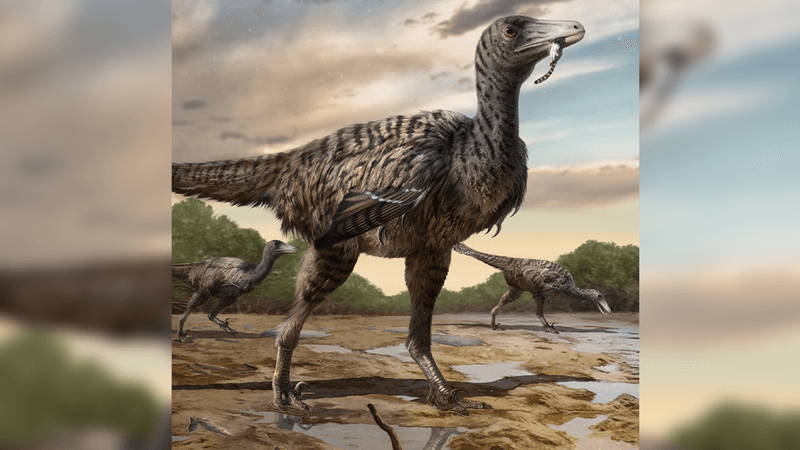About halfway along the East Coast of the US, where Delaware meets Maryland and Virginia, there’s a tiny island called Assateague. No humans live there – it used to be home to a tiny village of no more than around 200 people, but that’s long abandoned now.
Even if you wanted to move to Assateague, it probably wouldn’t be a good idea: the island’s shape and even its position in the sea are constantly in flux, and storms seem to destroy any infrastructure people try to build. In fact, the most notable permanent residents on Assateague are the wild horses.
“Assateague's wild horses are well known, even to many people who have never been to the island,” notes the National Park Service (NPS). But despite their popularity, one thing has always remained mysterious: where did they come from? It’s a question nobody has ever been able to definitively answer – until now.
“It was a serendipitous finding,” said Nicolas Delsol, a postdoctoral researcher at the Florida Museum of Natural History and lead author of a new paper, published today in the journal PLOS ONE, which points the finger squarely at early Spanish explorers as the likely source of the horse population.
Fittingly, Delsol was originally investigating a very different question to the one he ended up answering. “I was sequencing mitochondrial DNA from fossil cow teeth for my PhD,” he explained.
“[I] realized something was very different with one of the specimens when I analyzed the sequences.”
Different is right: it was another species entirely. The tooth was originally the molar of an adult horse that lived more than 400 years ago in Puerto Real – an early 16th-century town in what is now Haiti.
“Puerto Real… served for decades as the last port of call for ships sailing from the Caribbean,” explain the researchers. “But rampant piracy and the rise of illegal trade in the 16th century forced the Spanish to consolidate their power elsewhere on the island, and in 1578, residents were ordered to evacuate[.]”
“The abandoned town was destroyed the following year by Spanish officials,” they add.
It took 400 years for the site to be rediscovered, but since then there have been many archeological finds from what was once Puerto Real. Most, though, had nothing to do with horses: “of the over 127,000 vertebrate specimens identified from Puerto Real thus far, only 8 were attributed to horse when this study began,” the paper notes.
So sequencing the tooth’s genome was already an exciting prospect: it’s the oldest DNA ever obtained from a domesticated horse in the Americas. But it was when Delsol compared the specimen to the DNA of modern horses that the real surprise came.
“The specimen that presents the closest affinities with the Puerto Real horse is an individual belonging to the Chincoteague pony breed,” the paper says, referring to the wild horses of Assateague.
And that’s rather exciting: it ties quite nicely with one of the main origin myths of the equine population.
“The origin of the Chincoteague ponies is popularized by a local oral history retold in the mid-20th century children’s novel Misty of Chincoteague,” the paper notes. “According to this story, Chincoteague ponies descend from a small herd of horses that escaped the shipwreck of a Spanish galleon during the colonial era.”
“The galleon is said to have set sail from the Caribbean but was caught in a storm and shipwrecked close to [Assateague’s neighbor] Chincoteague Island.”
Not everyone has accepted this idea. “[The] dramatic tale of struggle and survival is popular,” says NPS, but “there are no records yet that confirm it.”
“The most plausible explanation is that they are the descendants of horses that were brought to barrier islands like Assateague in the late 17th century by mainland owners to avoid fencing laws and taxation of livestock,” the Service says.
But “early colonial literature is often patchy, and… just because they don’t mention the horses doesn’t mean they weren’t there,” argued Delsol. And the new study lends strong evidence to the Spanish story: according to genome sequencing, the Puerto Real horse belongs to the equine haplogroup A, a maternal branch commonly found in Central Asia and Southern Europe. Most importantly, this type of horse has been found in Spain since the Bronze Age – and so the Puerto Real horse can be seen as something of a “missing link” between Spanish horses and their Assateague cousins.
While the researchers acknowledge their conclusion rests on a single mitochondrial genome, they argue that the results are nevertheless significant for many reasons. “Our study highlights how ancient DNA can help us understand cultural and historical processes,” they write, “not only in the remote past but also in understudied episodes of more recent history.”
“The analysis of the introduction of European domesticates (e.g. the horse) in the Americas is such a fascinating yet understudied topic,” they note. “Our results support the Iberian origins of these animals but they also highlight another narrative: the exploration of the mid-Atlantic coast by the Spanish early during the colonial period.”




